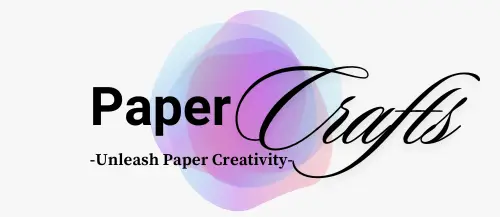Crafting Reference Books: A Comprehensive Guide
In the vast world of literature and publishing, crafting reference books stands out as a unique and meticulous endeavour. These books serve as invaluable resources, offering detailed information on specific subjects, and are essential in various fields, from academia to hobbies. This guide aims to delve deeply into the process of creating high-quality reference books, ensuring they are both informative and engaging.
Understanding the Importance of Reference Books
Reference books are designed to provide reliable and concise information on particular topics. Unlike regular books, which may follow a narrative or thematic structure, reference books are structured to allow easy access to specific information. This makes them indispensable tools for students, professionals, and enthusiasts alike.
Research: The Backbone of Crafting Reference Books
Research is the cornerstone of any reference book. The accuracy and depth of information are what set reference books apart from other types of literature. Here’s a detailed look at the research process:
Identifying Reliable Sources
When crafting reference books, it’s crucial to use reputable sources. Academic journals, verified online databases, and interviews with experts are excellent starting points. Ensure that all sources are up-to-date and relevant to maintain the book’s credibility.
Organising Information
Once the research is gathered, organising it logically is key. Use thematic categories, chronological order, or alphabetical listings, depending on the book’s subject matter. This organisation will help in creating a user-friendly structure.
Verification and Cross-Checking
Verification involves cross-checking facts and figures from multiple sources. This step is vital to avoid any inaccuracies that could undermine the book’s reliability.
Structuring the Reference Book
The structure of a reference book plays a significant role in its usability. A well-structured book not only enhances readability but also ensures that information is easily accessible.
Table of Contents and Indexing
A detailed table of contents and an exhaustive index are essential components. They guide the reader to the exact location of the required information. The index should include all significant terms and topics covered in the book.
Chapters and Subsections
Divide the book into clear chapters and subsections. Each chapter should cover a broad aspect of the main topic, with subsections diving into specific details. This hierarchical structure helps in maintaining a clear and logical flow of information.
Writing Style and Language
The writing style of a reference book should be clear, concise, and formal. Avoid using jargon unless it is explained within the text. The language should be accessible to the target audience, ensuring that even complex information is easily understood.
Consistency and Clarity
Maintain consistency in terminology, style, and formatting throughout the book. Use bullet points, tables, and charts where necessary to present information clearly and succinctly.
Use of Visual Aids
Incorporating visual aids such as diagrams, illustrations, and photographs can greatly enhance the reader’s understanding. Ensure that all visual aids are of high quality and relevant to the content.
Editing and Proofreading
Editing and proofreading are critical steps in crafting reference books. These processes ensure that the book is free from errors and inconsistencies.
Professional Editing
Hiring a professional editor who specialises in reference books can be immensely beneficial. They can provide an objective review and ensure that the book adheres to the highest standards of accuracy and clarity.
Proofreading for Errors
Proofreading should focus on identifying and correcting grammatical errors, typos, and formatting issues. It’s often helpful to have multiple rounds of proofreading to catch all possible errors.
Publishing and Distribution
Once the book is complete, the next step is publishing and distribution. Choosing the right publishing platform and distribution channels can significantly impact the book’s reach and success.
Traditional vs. Self-Publishing
Decide whether to go with traditional publishing or self-publishing. Traditional publishing offers the benefit of established distribution networks, while self-publishing provides more control over the process and potentially higher royalties.
Marketing and Promotion
Effective marketing strategies are crucial for the book’s success. Utilise social media, book launch events, and partnerships with educational institutions to promote the book. Online platforms like Amazon and Goodreads can also be valuable for reaching a wider audience.
Conclusion
Crafting reference books is a meticulous and rewarding process that requires careful planning, thorough research, and attention to detail. By following the steps outlined in this guide, you can create a high-quality reference book that stands out in the market and serves as an invaluable resource for its readers.
Frequently Asked Questions (FAQ) on Crafting Reference Books
1. What is a reference book?
A reference book is a type of publication designed to provide concise and reliable information on specific subjects. Unlike regular books, reference books are structured to allow easy access to particular pieces of information, making them essential tools for students, professionals, and enthusiasts.
2. Why is research important in crafting reference books?
Research is the backbone of any reference book. It ensures that the information provided is accurate, up-to-date, and reliable. Using reputable sources and verifying facts through cross-checking are critical steps in maintaining the book’s credibility.
3. How should information be organised in a reference book?
Information in a reference book should be organised logically, using thematic categories, chronological order, or alphabetical listings, depending on the subject matter. A well-organised structure helps in creating a user-friendly book that enhances readability and accessibility.
4. What are the essential components of a reference book’s structure?
Key components include a detailed table of contents and an exhaustive index. These elements guide the reader to the exact location of the required information. Additionally, clear chapters and subsections help maintain a logical flow of information.
5. What writing style should be used for reference books?
The writing style should be clear, concise, and formal. Avoid using jargon unless it is explained within the text. The language should be accessible to the target audience to ensure that even complex information is easily understood.
6. How can visual aids enhance a reference book?
Visual aids such as diagrams, illustrations, and photographs can greatly enhance the reader’s understanding. They should be of high quality and relevant to the content, helping to clarify and complement the written information.
7. Why are editing and proofreading important in crafting reference books?
Editing and proofreading ensure that the book is free from errors and inconsistencies. These processes improve the overall quality and readability of the book. Hiring a professional editor and conducting multiple rounds of proofreading can be immensely beneficial.
8. What are the options for publishing a reference book?
You can choose between traditional publishing and self-publishing. Traditional publishing offers the benefit of established distribution networks, while self-publishing provides more control over the process and potentially higher royalties.
9. How can a reference book be effectively marketed?
Effective marketing strategies include utilising social media, organising book launch events, and partnering with educational institutions. Online platforms like Amazon and Goodreads can also help reach a wider audience. A well-planned marketing campaign can significantly impact the book’s reach and success.
10. How do I ensure the information in my reference book is up-to-date?
To ensure the information is up-to-date, regularly review and update the content as necessary. Stay informed about the latest developments in the subject area and incorporate new findings into the book. This ongoing process helps maintain the book’s relevance and accuracy.




